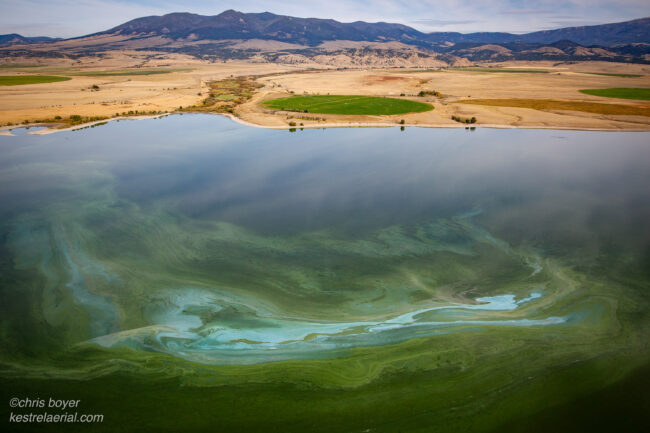
by Derf Johnson
Protecting Montana’s water quality is an essential part of preserving Montana’s environment, cultural values, and economic prosperity. Water is absolutely the lifeblood of this semi-arid state, and the critical ingredient for assuring that Montanans continue to prosper and enjoy our home. Unfortunately, once again, the Montana Legislature has kowtowed to strong industry lobbyists and bent the knee to the polluters at the expense of clean water for all. In particular, two major changes to Montana water quality laws could have dramatic, long-lasting impacts on Montana’s water quality — and the people that depend on it.
HB 664 (Rep. Bill Mercer, R-Billings) once again attempts to repeal Montana’s numeric standard for nutrient pollution in water bodies. These standards were adopted in 2014 and were developed after nearly a decade of stakeholder involvement and science to determine the correct water quality standards that would be needed in order to protect the beneficial uses of our waterways — which include swimming, drinking, and fishing — from the harms caused by excessive nutrients in the water such as algae blooms that choke out aquatic life. Nutrients generally find their way into waterways through failing septic systems, law care, and agricultural runoff. Unfortunately, due to pressure from municipalities and industry, these standards have been under attack for several years. In 2021, the Montana Legislature passed SB 358 (Sen. John Esp, R-Big Timber), which tried to entirely repeal Montana’s numeric standards and direct the Montana Department of Environmental Quality (DEQ) to conduct a rulemaking and develop a narrative standard and adaptive management plan. Fortunately, the change to the law was rejected by the U.S. Environmental Protection Agency as it was deemed to not comply with the federal Clean Water Act.
Over the following years, DEQ and its nutrient working group conducted a stakeholder process and ultimately a rule package for the implementation of narrative standards through an adaptive management plan. Unfortunately, those proposed regulations fell short of protecting water quality and were ultimately disfavored by virtually all of the interests that they would impact. Instead of proceeding with the regulations, DEQ chose to shelve the rules and instead supported an entire repeal of the numeric water quality standards this session. The difference this time? There is no plan required or in place for a replacement standard to protect Montana’s water quality.
This places DEQ and the state of Montana in an incredibly precarious situation. Not only is the state repealing protective water quality standards and compromising our water resources, but it is potentially risking primacy over the regulation of nutrients by failing to comply with federal standards. Without a state program to “implement, administer, enforce and maintain,” the state could lose the ability to run its own water quality program. Ultimately, the U.S. Environmental Protection Agency will review and approve or reject this change, and MEIC will be intricately involved in that process.
Additionally, the Legislature passed and Gov. Greg Gianforte signed HB 685 (Rep. Steve Fitzpatrick, R-Great Falls), which “waters down” Montana’s nondegradation policy — a law that protects high-quality waters in Montana from pollution degradation. The bill changes the name of the policy to “feasibility allowance,” contemplating pollution management through an allowance of pollutants instead of the prevention of pollutants. Further, it eliminates a requirement that the DEQ fully evaluate the costs of pollution in a proposal to degrade (such as impacts to the environment and society) while still requiring that DEQ conduct an analysis of the associated benefits (such as jobs and payroll from a particular polluting project). This one-sided approach will almost certainly weaken Montana’s water quality protections for projects that are looking for an “authorization to degrade” — or rather, now “an allowable pollutant load.” Montana’s waters will almost certainly suffer as a result, and so MEIC will be bird-dogging this change as we move toward implementation.
This article was published in the June 2025 issue of Down To Earth.

